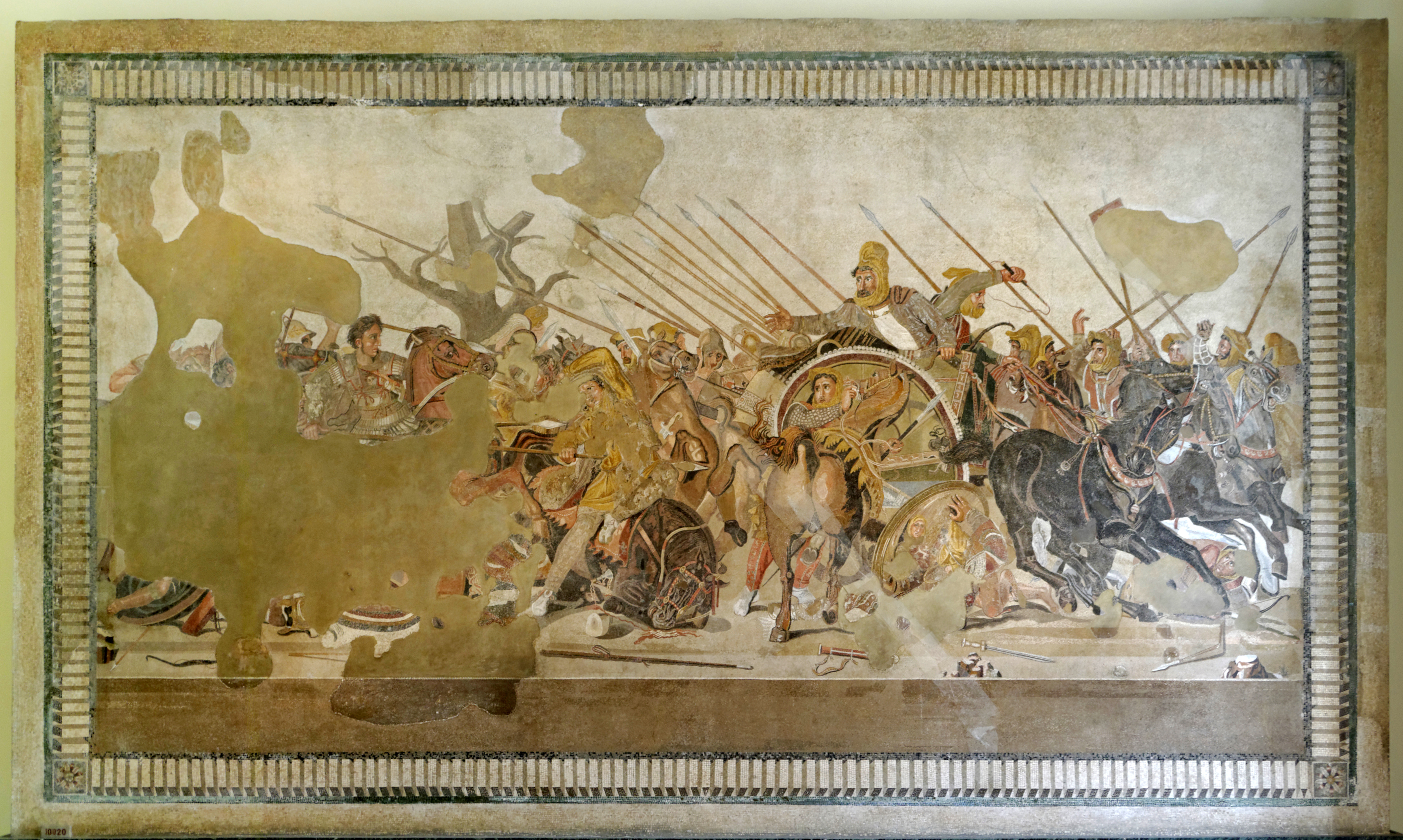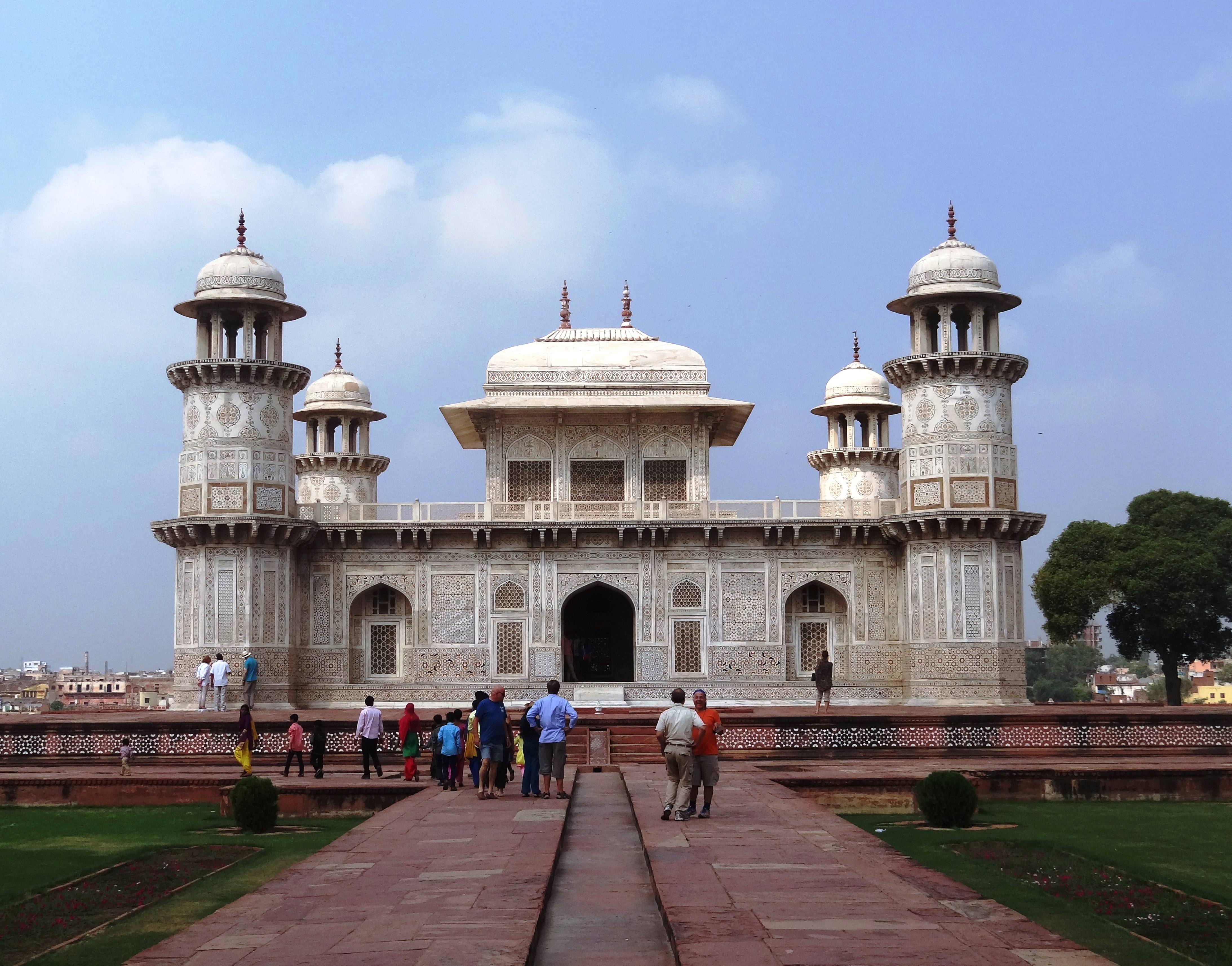|
Glaucias Of Macedon
Glaucias of Macedon ( grc, Γλαυκίας) was an officer of the Companion cavalry at the Battle of Gaugamela. He may be the Glaucias who, on Cassander's orders, murdered Alexander IV of Macedon and his mother Roxana in the citadel of Amphipolis. Defenders of the Argead dynasty began to declare that Alexander IV, at the age of 14, should now rule on his own and that a regent was no longer needed. Cassander realized that to secure his rule Alexander would need to be removed, and in 309 BC he commanded Glaucias to assassinate the Alexander IV and his mother. The orders were carried out, and they were both poisoned. The consensus in ''A History of Macedonia Vol. 3'' is that Alexander was killed late in the summer of 309 BC, shortly after his alleged half-brother Heracles. One of the royal tombs discovered by the archaeologist Manolis Andronikos in the so-called "Great Tumulus" in Vergina Vergina ( el, Βεργίνα, ''Vergína'' ) is a small town in northern Greece, part ... [...More Info...] [...Related Items...] OR: [Wikipedia] [Google] [Baidu] |
Companion Cavalry
The Companions ( el, , ''hetairoi'') were the elite cavalry of the Macedonian army from the time of king Philip II of Macedon, achieving their greatest prestige under Alexander the Great, and regarded as the first or among the first shock cavalry used in Europe. Chosen Companions, or Hetairoi, formed the elite guard of the king (Somatophylakes). Etymology The name of the military unit derives from Greek ''Hetairoi'', those near the king. The Hetairoi (Companions) could be members of the Macedonian aristocracy or commoners of any origin who enjoyed the trust and friendship of the Macedonian regent. The Hetairideia, a festival pertaining to the sacred relationship which bound the king and his companions together was celebrated and even Euripides, the famed Athenian playwright, was honoured as an ''hetairos'' of the king Archelaus. The Royal friends (Philoi) or the king's Companions (basilikoi hetairoi) were named for life by the king among the Macedonian aristocracy. Unit ... [...More Info...] [...Related Items...] OR: [Wikipedia] [Google] [Baidu] |
Battle Of Gaugamela
The Battle of Gaugamela (; grc, Γαυγάμηλα, translit=Gaugámela), also called the Battle of Arbela ( grc, Ἄρβηλα, translit=Árbela), took place in 331 BC between the forces of the Army of Macedon under Alexander the Great and the Persian Army under King Darius III. It was the second and final battle between the two kings, and is considered to be the final blow to the Achaemenid Empire, resulting in its complete conquest by Alexander. The fighting took place in Gaugamela, which literally meant "The Camel's House", a village on the banks of the river Bumodus. The area today would be considered modern-day Erbil, Iraq, according to Urbano Monti's world map. Alexander's army was heavily outnumbered and modern historians say that "the odds were enough to give the most experienced veteran pause". Despite the overwhelming odds, Alexander's army emerged victorious due to the employment of superior tactics and the clever usage of light infantry forces. It was a decis ... [...More Info...] [...Related Items...] OR: [Wikipedia] [Google] [Baidu] |
Cassander
Cassander ( el, Κάσσανδρος ; c. 355 BC – 297 BC) was king of the Ancient Greek kingdom of Macedonia from 305 BC until 297 BC, and ''de facto'' ruler of southern Greece from 317 BC until his death. A son of Antipater and a contemporary of Alexander the Great, Cassander was one of the Diadochi who warred over Alexander's empire following the latter's death in 323 BC. Cassander later seized the crown by having Alexander's son and heir Alexander IV murdered. In governing Macedonia from 317 BC until 297 BC, Cassander restored peace and prosperity to the kingdom, while founding or restoring numerous cities (including Thessalonica, Cassandreia, and Thebes, Greece, Thebes); however, his ruthlessness in dealing with political enemies complicates assessments of his rule.Beckett, ''Universal Biography'', Vol. 1, p. 688 Early history In his youth, Cassander was taught by the philosopher Aristotle at the Lyceum in Macedonia. He was educated alongside Alexander the Great i ... [...More Info...] [...Related Items...] OR: [Wikipedia] [Google] [Baidu] |
Alexander IV Of Macedon
Alexander IV (Greek: ; 323/322– 309 BC), sometimes erroneously called Aegus in modern times, was the son of Alexander the Great (Alexander III of Macedon) and Princess Roxana of Bactria. Birth Alexander IV was the son of Alexander the Great (a Macedonian Greek) and Alexander's wife Roxana (a Sogdian). He was the grandson of Philip II of Macedon. Because Roxana was pregnant when Alexander the Great died on 11 June 323 BC and the sex of the baby was unknown, there was dissension in the Macedonian army regarding the order of succession. While the infantry supported Alexander the Great's half-brother Philip III (who had some unknown cognitive disability present throughout his life), the chiliarch Perdiccas, commander of the elite Companion cavalry, persuaded them to wait in the hope that Roxana's child would be male. The factions compromised, deciding that Perdiccas would rule the Empire as regent while Philip would reign, but only as a figurehead with no real power. ... [...More Info...] [...Related Items...] OR: [Wikipedia] [Google] [Baidu] |
Roxana
Roxana (c. 340 BC – 310 BC, grc, Ῥωξάνη; Old Iranian: ''*Raṷxšnā-'' "shining, radiant, brilliant"; sometimes Roxanne, Roxanna, Rukhsana, Roxandra and Roxane) was a Sogdian or a Bactrian princess whom Alexander the Great married after defeating Darius, ruler of the Achaemenid Empire, and invading Persia. The exact date of her birth is unknown, but she was probably in her late teens or early twenties at the time of her wedding to Alexander the Great. Biography Roxana was born in c. 340 BC as the daughter of a Bactrian nobleman named Oxyartes who served Bessus, the satrap of Bactria and Sogdia. He was thus probably also involved in the murder of the last Achaemenid king Darius III. After Bessus was captured by the Macedonian ruler Alexander the Great, Oxyartes and his family continued to resist the Macedonians, and along with other notables such as the Sogdian warlord Spitamenes, took up a defensive position in a fortress known as the Sogdian Rock. They we ... [...More Info...] [...Related Items...] OR: [Wikipedia] [Google] [Baidu] |
Amphipolis
Amphipolis ( ell, Αμφίπολη, translit=Amfipoli; grc, Ἀμφίπολις, translit=Amphipolis) is a municipality in the Serres (regional unit), Serres regional unit, Macedonia (Greece), Macedonia, Greece. The seat of the municipality is Rodolivos. It was an important ancient Greek Polis, polis (city), and later a Roman city, whose large remains can still be seen. Amphipolis was originally a Colonies in antiquity, colony of ancient Athenians and was the site of the Battle of Amphipolis, battle between the Spartans and Athenians in 422 BC. It was later the place where Alexander the Great prepared for campaigns leading to his invasion of Asia in 335 BC. Alexander's three finest admirals, Nearchus, Androsthenes of Thasos, Androsthenes and Laomedon of Mytilene, Laomedon, resided in Amphipolis. After Alexander's death, his wife Roxana and their son Alexander IV of Macedon, Alexander IV were imprisoned and murdered in 311 BC. Excavations in and around the city have revealed im ... [...More Info...] [...Related Items...] OR: [Wikipedia] [Google] [Baidu] |
Tomb III Vergina
A tomb ( grc-gre, τύμβος ''tumbos'') is a repository for the remains of the dead. It is generally any structurally enclosed interment space or burial chamber, of varying sizes. Placing a corpse into a tomb can be called ''immurement'', and is a method of final disposition, as an alternative to cremation or burial. Overview The word is used in a broad sense to encompass a number of such types of places of interment or, occasionally, burial, including: * Architectural shrines – in Christianity, an architectural shrine above a saint's first place of burial, as opposed to a similar shrine on which stands a reliquary or feretory into which the saint's remains have been transferred * Burial vault – a stone or brick-lined underground space for multiple burials, originally vaulted, often privately owned for specific family groups; usually beneath a religious building such as a church ** Cemetery ** Churchyard * Catacombs * Chamber tomb * Charnel house * Church mon ... [...More Info...] [...Related Items...] OR: [Wikipedia] [Google] [Baidu] |
Heracles Of Macedon
Heracles of Macedon ( grc, Ἡρακλῆς; c. 327 – 309 BC) was a reputed illegitimate son of Alexander the Great of Macedon by Barsine, daughter of Satrap Artabazus of Phrygia. Heracles was named after the Heracles, Greek mythological hero of the same name, from whom the Argead Dynasty, Argeads claimed descent. History It cannot be established definitively whether Heracles was Alexander’s son or not. Of the ancient sources, both Plutarch and Justin (historian), Justin mention Barsine and Heracles but Arrian in the Alexander's Anabasis mentions neither. Plutarch recounts that Alexander took Barsine as his mistress, but on the arguably spurious grounds that she was recommended to him by Parmenion (despite the many disagreements between him and Alexander, and Alexander's apparent contempt for his judgement). Of Barsine, Mary Renault states that: If Heracles ''were'' Alexander’s illegitimate child, then it also raises the pointed question as to why he, as Alexander’s only l ... [...More Info...] [...Related Items...] OR: [Wikipedia] [Google] [Baidu] |
Tumulus
A tumulus (plural tumuli) is a mound of earth and stones raised over a grave or graves. Tumuli are also known as barrows, burial mounds or ''kurgans'', and may be found throughout much of the world. A cairn, which is a mound of stones built for various purposes, may also originally have been a tumulus. Tumuli are often categorised according to their external apparent shape. In this respect, a long barrow is a long tumulus, usually constructed on top of several burials, such as passage graves. A round barrow is a round tumulus, also commonly constructed on top of burials. The internal structure and architecture of both long and round barrows has a broad range; the categorization only refers to the external apparent shape. The method of may involve a dolmen, a cist, a mortuary enclosure, a mortuary house, or a chamber tomb. Examples of barrows include Duggleby Howe and Maeshowe. Etymology The word ''tumulus'' is Latin for 'mound' or 'small hill', which is derived from th ... [...More Info...] [...Related Items...] OR: [Wikipedia] [Google] [Baidu] |
Vergina
Vergina ( el, Βεργίνα, ''Vergína'' ) is a small town in northern Greece, part of Veria municipality in Imathia, Central Macedonia. Vergina was established in 1922 in the aftermath of the population exchanges after the Treaty of Lausanne and was a separate municipality until 2011, when it was merged with Veroia under the Kallikratis Plan. Vergina is best known as the site of ancient Aigai (Αἰγαί, ''Aigaí'', Latinized: ''Aegae''), the first capital of Macedon. In 336 BC Philip II was assassinated in Aigai's theatre and his son, Alexander the Great, was proclaimed king. In 1977, the burial sites of several kings of Macedon were uncovered, including the tomb of Philip II which had not been disturbed or looted, unlike so many of the other tombs there. The ancient town was also the site of an extensive royal palace. The archaeological museum of Vergina was built to house all the artifacts found at the site and is one of the most important museums in Greece. Aigai ... [...More Info...] [...Related Items...] OR: [Wikipedia] [Google] [Baidu] |
Ariston Of Macedon
Ariston ( el, Ἀρίστων) was a Greek cavalry officer at the battle of Gaugamela The Battle of Gaugamela (; grc, Γαυγάμηλα, translit=Gaugámela), also called the Battle of Arbela ( grc, Ἄρβηλα, translit=Árbela), took place in 331 BC between the forces of the Army of Macedon under Alexander the Great a ..., where his squadron was stationed between those of Glaucias and Sopolis. References *Who's who in the age of Alexander the Great: prosopography of Alexander's empire {{ISBN, 978-1-4051-1210-9 Generals of Alexander the Great Ancient Macedonian generals 4th-century BC Macedonians ... [...More Info...] [...Related Items...] OR: [Wikipedia] [Google] [Baidu] |







